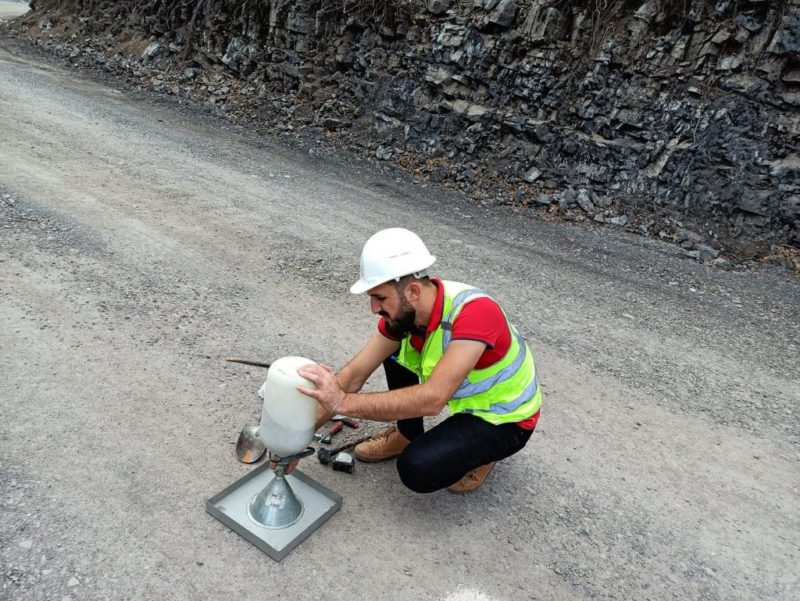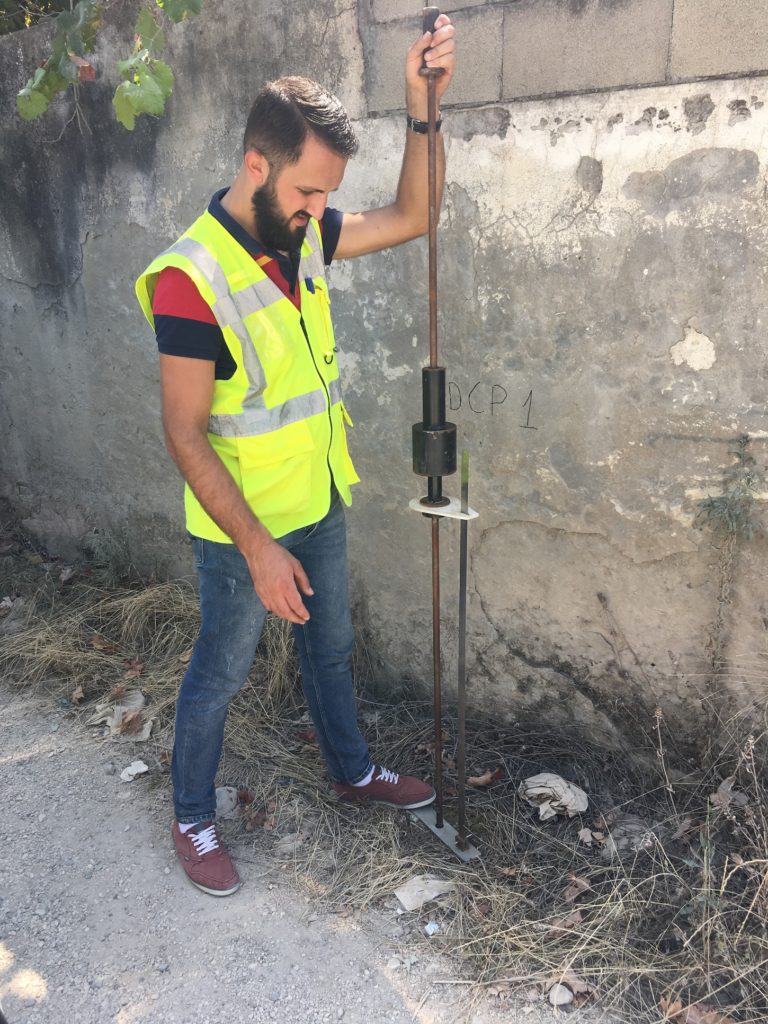CNR N.146/1992 / ASTM D 4695-03
3.1 Field, in-place nonrepetitive static load tests are used for the evaluation and design of pavement structures. Nonrepetitive static plate load tests are performed on soils and unbound base and subbase materials to determine the modulus of subgrade reaction or a measure of the shear strength of pavement components.
This test method covers the making of nonrepetitive static plate load tests on subgrade soils and pavement components, in either the compacted condition or the natural state, and provides data for use in the evaluation and design of rigid and flexible-type airport and highway pavements.

ASTM E-2835-11
This test method covers the determination of plate deflection resulting from the application of an impulse load. The deflection is measured at the center of the top of the load plate
If the load plate is in “perfectly uniform” contact with the unbound material under the plate, then deflection of the load plate should be equal to the deflection of the surface of the unbound material under test. However, with typical unbound materials a 100 % uniform contact can seldom be achieved. Accordingly, the test surface shall be as clean and smooth as possible with loose granules and protruding material removed. For gravel surfaces, it is recommended that a thin layer of fine sand be placed over the test point. For fine-grained materials, this will help in obtaining a reasonably uniform contact between the load plate and the surface. See 5.1 in Test Method D1195/D1195M.

ASTM D 1556
This test method is used to determine the density and water content of compacted soils placed during the construction of earth embankments, road fill, and structural backfill. It often is used as a basis of acceptance for soils compacted to a specified density or percentage of a maximum density determined by a test method, such as Test Methods D698 or D1557.
Deflections may be either correlated directly to pavement performance or used to determine in-situ material characteristics of the pavement foundation layers. Some uses of the data include quality control and quality assurance of compacted layers, and for structural evaluation of load carrying capacity (see Note 2 and Guide D4695).

ASTM D6951 / D6951M – 18
This test method covers the measurement of the penetration rate of the dynamic cone penetrometer with an 8-kg [17.6-lb] hammer (8-kg [17.6-lb] DCP) through undisturbed soil or compacted materials, or both. The penetration rate may be related to in situ strength such as an estimated in situ CBR (California Bearing Ratio). A soil density may be estimated (Note 1) if the soil type and moisture content are known. The DCP described in this test method is typically used for pavement applications.
The test method provides for an optional 4.6-kg [10.1-lb] sliding hammer when the use of the 8-kg [17.6-lb] sliding mass produces excessive penetration in soft ground conditions.

SSH EN 12350-2
This document specifies a method for determining the consistence of fresh concrete by the slump test. The slump test is sensitive to changes in the consistence of concrete, which correspond to slumps between 10 mm and 210 mm. Beyond these extremes the measurement of slump can be unsuitable and other methods of determining the consistency should be considered. If the slump continues to change over a period of 1 min after withdrawing of the cone, the slump test is not suitable as a measure of consistence. The test is not suitable when the declared value of D of the coarsest fraction of aggregates actually used in the concrete (Dmax) is greater than 40 mm.
EN 12697-6:20
This document specifies test methods for determining the bulk density of a compacted bituminous specimen. The test methods are intended for use with laboratory compacted specimens or specimens from the pavement after placement and compacting, either by coring or sawing.
This document specifies the following four procedures, the choice of which is used being dependent on the estimated content and accessibility of voids in the specimen:
- bulk density — dry (for specimens with a very closed surface);
- bulk density — saturated surface dry (SSD) (for specimens with a closed surface);
- bulk density — sealed specimen (for specimens with an open or coarse surface);
- bulk density by dimensions (for specimens with a regular surface and with geometric shapes, i.e. squares, rectangles, cylinders, etc.).

ASTM D4695 – 03
This guide provides procedural information for measuring pavement surface deflections, directly under, or at locations radially outward (offset) from a known static, steady-state, or impulse load. Deflections are measured with sensors that monitor the vertical movement of a pavement surface due to the load. This guide describes procedures for the deflection measurement using various deflection testing devices and provides the general information that should be obtained regardless of the type of testing device used.
This Guide is applicable for deflection measurements performed on flexible asphalt concrete (AC), rigid portland cement concrete (PCC), or composite (AC/PCC) pavements. Rigid pavements may be plain, jointed, jointed reinforced, or continuously reinforced concrete.

EN 1997-1
This document specifies the requirement for indirect investigation of soil by standard penetration test as part of geotechnical investigation and testing according to EN 1997-1.
The standard penetration test aims to determine the resistance of soils at the base of the bore hole to the dynamic penetration of a split barrel sampler and the recovering of distributed samples for identification purposes (SPT). In gravely soils and in soft rocks a solid cone is also be used.

